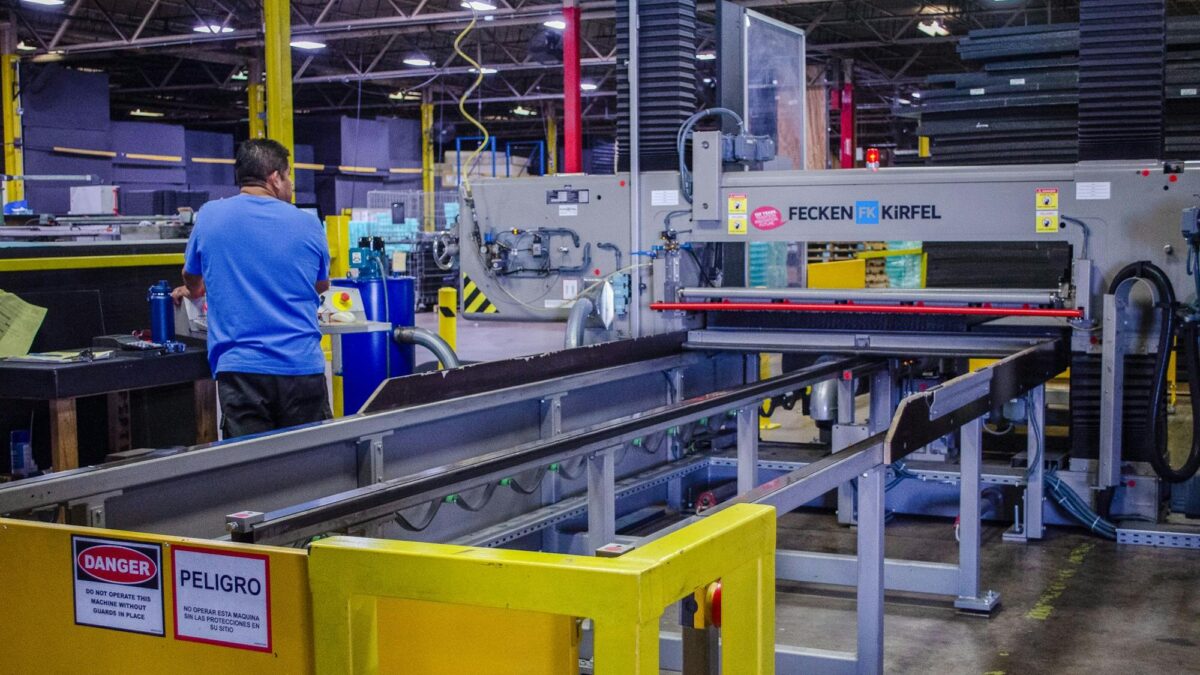Foam can be used to protect products and shield components from damage in high-heat applications. Many variations of foam are used in automotive, aerospace, manufacturing, and even electronics. These specific high temperature foams can endure elevated temperatures without degrading or losing their protective qualities. What are the best types of foam to use in high heat applications?
The Challenges of High Heat Applications
High heat environments may introduce several challenges for foam materials:
- Thermal degradation: foam materials can break down when exposed to high temperatures over time. This can lead to loss of structural integrity and protective function.
- Flammability: in environments where the risk of fire is present, foam materials must resist ignition and not contribute to the spread of flames.
- Thermal expansion: high heat can cause some materials to expand, potentially leading to deformation and loss of function.
- Insulation: in many high-heat applications, foam materials are required to provide insulation, both to protect surrounding components and maintain safe operational temperatures.
To meet these challenges, the foam you choose must be able to withstand intense heat, provide adequate insulation, and remain structurally sound even under prolonged exposure.
The Unique Properties for High Temperature Foams
For high heat applications, the following properties are critical when choosing the right foam:
- Thermal Stability: the foam must resist breaking down or degrading when exposed to elevated temperatures. This ensures long-lasting performance without material failure.
- Low Thermal Conductivity: this property is essential in insulating materials. Foams with low thermal conductivity are excellent at slowing down heat transfer, protecting nearby components from high temperatures.
- Flame Retardancy: high heat environments may also involve exposure to open flames or the risk of fire. Flame-retardant properties ensure that the foam does not ignite easily, providing an added layer of safety.
- Compression Resistance: foam materials in high heat applications must be able to withstand mechanical stress without losing their shape or ability to protect. High-density foams are typically better suited for these applications.
- Chemical Resistance: in some high-temperature environments, exposure to chemicals and oils is a concern. Foam materials that resist chemical degradation are essential to maintain performance in these scenarios.
The Differences Between Flame Retardant, Flame Resistant, and Fireproof Foams
These are terms you will commonly hear while choosing a foam, but they mean very different things.
- Flame-Retardant Foams: these foams are treated with chemicals that inhibit the spread of fire. While they can catch fire, they are designed to slow down the burning process and minimize the spread of flames. Flame-retardant foams are often used in industries where there’s a risk of ignition but where complete fireproofing is not required.
- Flame-Resistant Foams: these foams are designed to resist catching fire when exposed to open flames. Flame-resistant foams are a step up from flame-retardant options in terms of protection, as they are less likely to ignite in the first place. However, if exposed to sustained heat or fire, they may eventually degrade.
- Fireproof Foams: technically, no foam is completely “fireproof” in the strictest sense, as all materials will burn or degrade at a certain temperature. However, fireproof foams refer to materials that can withstand extremely high temperatures without igniting or breaking down, offering the highest level of fire protection.
The Best Types of Foam for High Heat Applications
Now that we understand the key properties and classifications of foams, let’s explore the specific types of foam materials that perform well in high-heat applications.
Silicone Foam
Silicone foam is widely known for its excellent heat resistance, withstanding temperatures up to 400°F (204°C). It also maintains flexibility and cushioning properties at high temperatures, making it ideal for thermal insulation and sealing applications. It’s flame-retardant and performs well in environments exposed to chemicals and oils.
Silicone foam is commonly used in automotive gaskets, aerospace components, and high-temperature sealing in industrial settings.
Neoprene Foam
Neoprene foam is a synthetic rubber that is highly resistant to heat, oils, and chemicals. It can handle temperatures up to 200°F (93°C), making it suitable for environments where both heat and chemical exposure are present. It also has flame-retardant properties.
Neoprene foam is used in HVAC systems, industrial gaskets, and automotive applications where heat, oil, and chemical resistance are needed.
Polyethylene (PE) Foam
Cross-linked polyethylene (XLPE) foam offers good heat resistance and low thermal conductivity. While its upper heat tolerance is lower than silicone or neoprene (around 180°F or 82°C), its strength lies in its ability to provide excellent insulation and thermal stability in moderate heat environments. It’s also lightweight and resistant to water and chemicals.
PE foam is used in packaging for heat-sensitive items, as well as in thermal insulation applications in industrial settings.
Polyurethane Foam
Polyurethane foam can handle temperatures up to 180°F (82°C), making it suitable for a wide range of industrial and consumer applications. It provides excellent cushioning and support while also offering low thermal conductivity. Additionally, flame-retardant additives can be incorporated into polyurethane foam to enhance its fire resistance.
Polyurethane foam is used in automotive interiors, insulation for HVAC systems, and packaging for sensitive electronic equipment.
EPDM Foam
Ethylene Propylene Diene Monomer (EPDM) foam is known for its high resistance to heat, UV radiation, and weathering. It can withstand temperatures up to 300°F (150°C) and provides good insulation and cushioning properties. It’s often flame-retardant and resistant to chemicals and oils.
EPDM foam is used in HVAC systems, automotive seals, and gaskets in high-temperature industrial applications.
Looking for a Specific Type of Foam for a High Temperature Application? We Can Help You Choose the Right Foam and Customize it to Fit Your Specifications.


